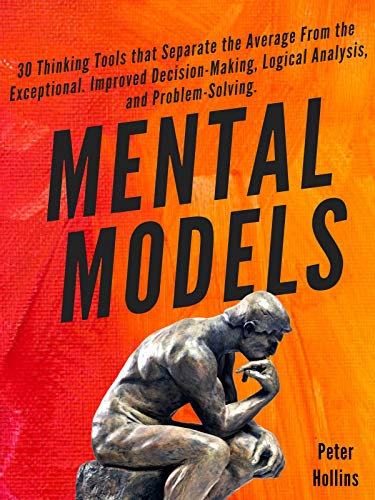This post is part of the 📖 Mental Models series.
Today, I am reading the fifth mental model Stay Within 40-70% from Decision-Making for Speed and Context chapter of the book Mental Models written by Author Peter Hollins.
Mental Models are like giving a treasure map to someone lost in the woods. They provide instant understanding, context, and most importantly, a path to the end destination. Now imagine having such a map for all problems and decisions in your life.
In this book Mental Models, author Peter Hollins discuss 30 mental models that billionaires/CEOs, Olympic athletes, and scientists use to think differently and avoid mistakes.
Battle information overwhelm, focus on what really matters, and make complex decisions with speed and confidence.
Yesterday, I finished reading the fourth mental model Seek “Satisfaction.
Chapter #1: Decision-Making for Speed and Context
Mental Model #5:
Stay Within 40-70%
Use to balance information with action
Anytime you face a difficult decision, you should have no less than 40% and no more than 70% of the information you need to make that decision.
In that range, you have enough information to make an informed choice.
This makes you faster than more “informed” people and more informed than “fast” people. In a sense, it’s the best of both worlds.
You are making the mistake of looking for 100% information and a foolproof plan where failure cannot exist.
Many people who search for this don’t realize that they are searching for something that doesn’t exist and only acts to keep their own hands tied.
Most engage in over-analysis and research that turns into procrastination, so they need to shoot for a zone of information that makes them uncomfortable.
Key Takeaways
- Anytime you face a difficult decision, consider that sweet spot between 40% and 70% information, you have more than enough to go on, and your intuition can fill in the gaps.
Summary
- Utilize this mental model by intentionally consuming less information and even overgeneralizing—this means not looking at the subtleties of your options.
That’s it for today. Tomorrow, we will read the sixth mental model Minimize Regret, use to consult the future you on decisions.
Address “Important”; Ignore “Urgent”
Identify and address important tasks, ignore urgent tasks. Delegate important but non-urgent task and delete not important and not urgent tasks.
Visualize All the Dominoes
Don’t stop your analysis once the most obvious situations are articulated. Consider as many long-term possible ramifications as you can. Think twice about what you’re doing, and it helps to eliminate rash decisions.
Make Reversible Decisions
If you want to make the best decision possible, you can go ahead and use reversible decisions to learn exactly what you need to know.
Seek “Satisfaction
We need far fewer things than we originally thought and that our desires are masquerading as needs. Use Seek “Satisfaction” to achieve your priorities and ignore what doesn’t matter by creating a default choice.
Stay Within 40-70%
Utilize this mental model by intentionally consuming less information and even overgeneralizing — this means not looking at the subtleties of your options.
Author(s): Peter Hollins
Part 6 of 29 in the 📖 Mental Models book series.
Series Start | Mental Models - Day 5 | Mental Models - Day 7
